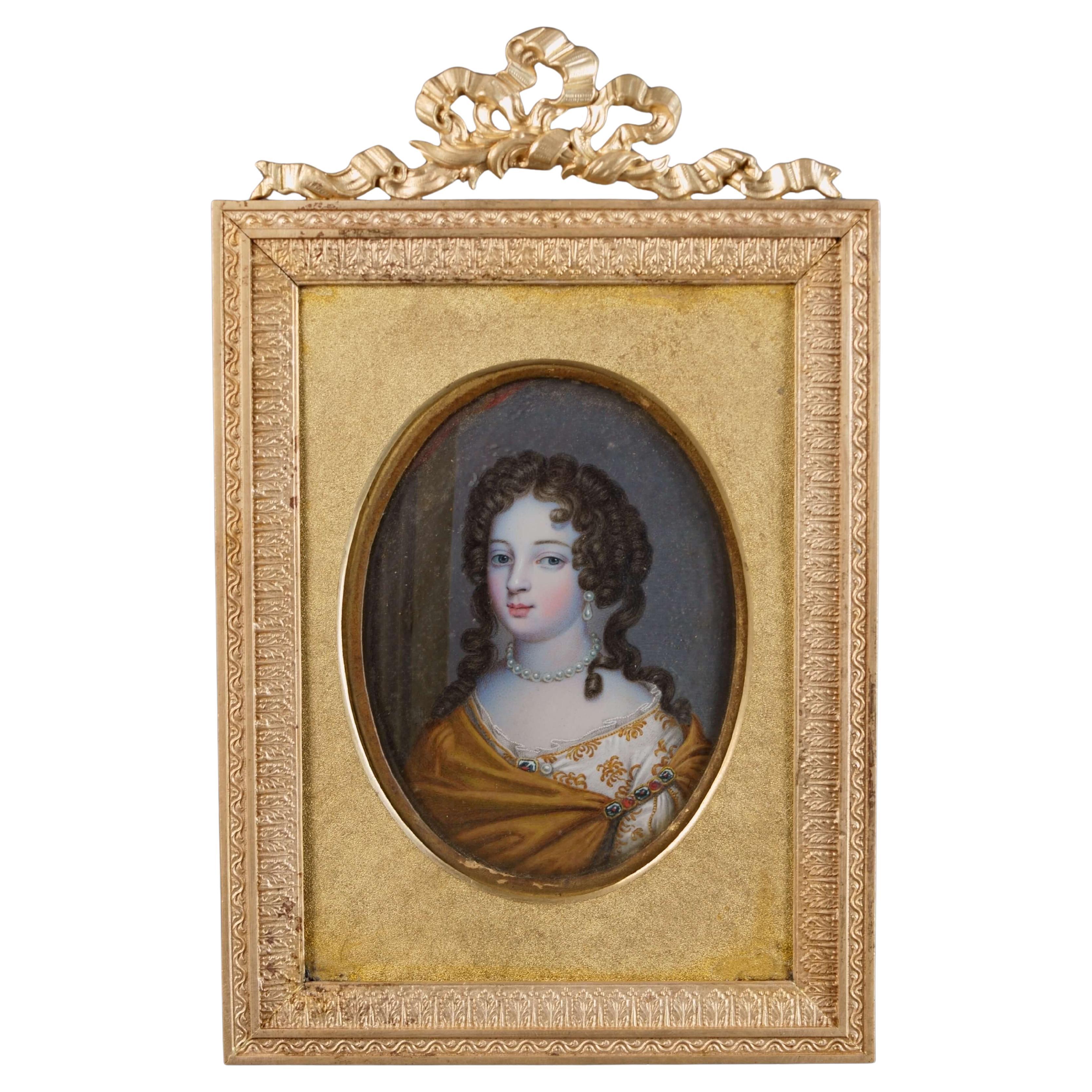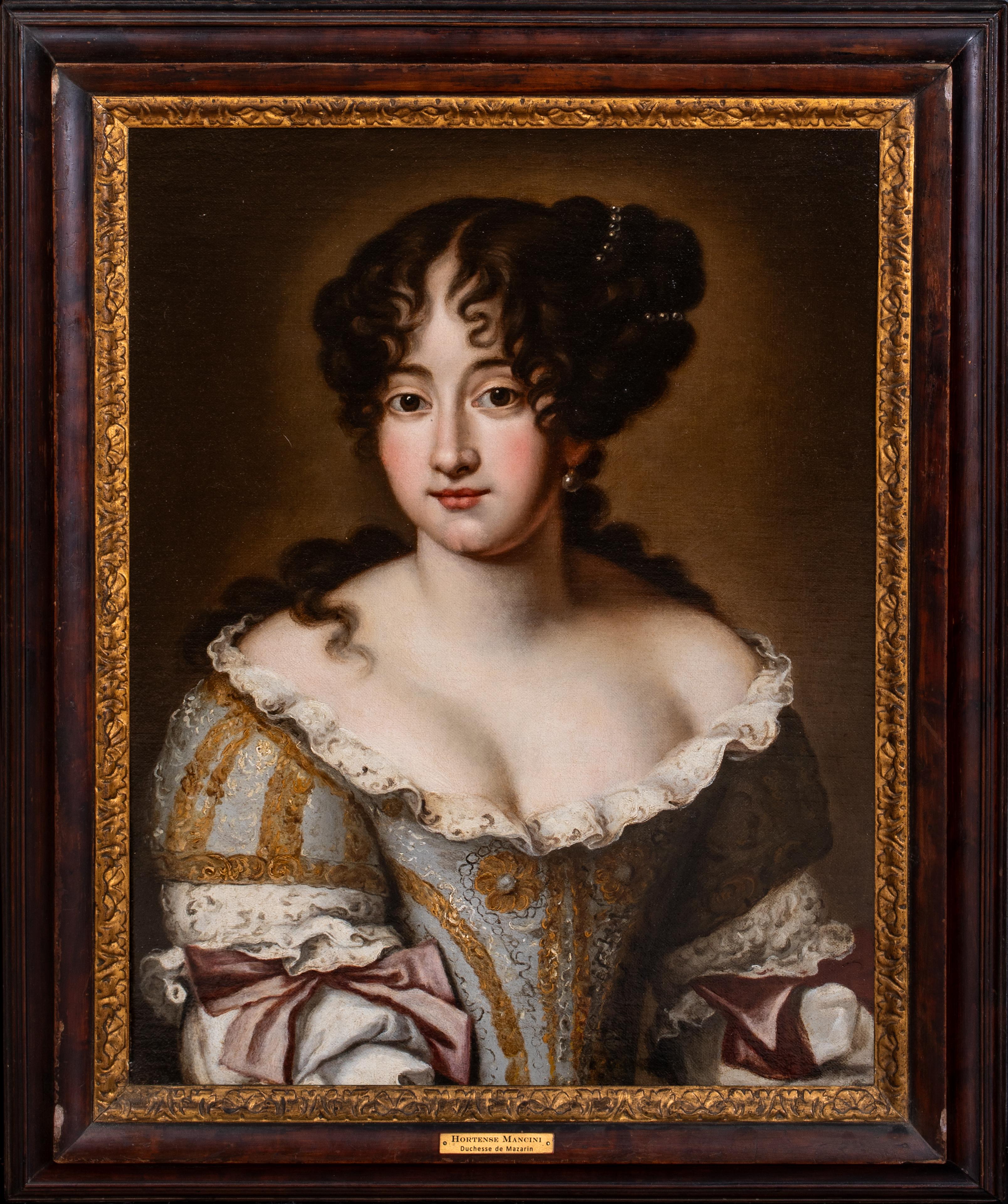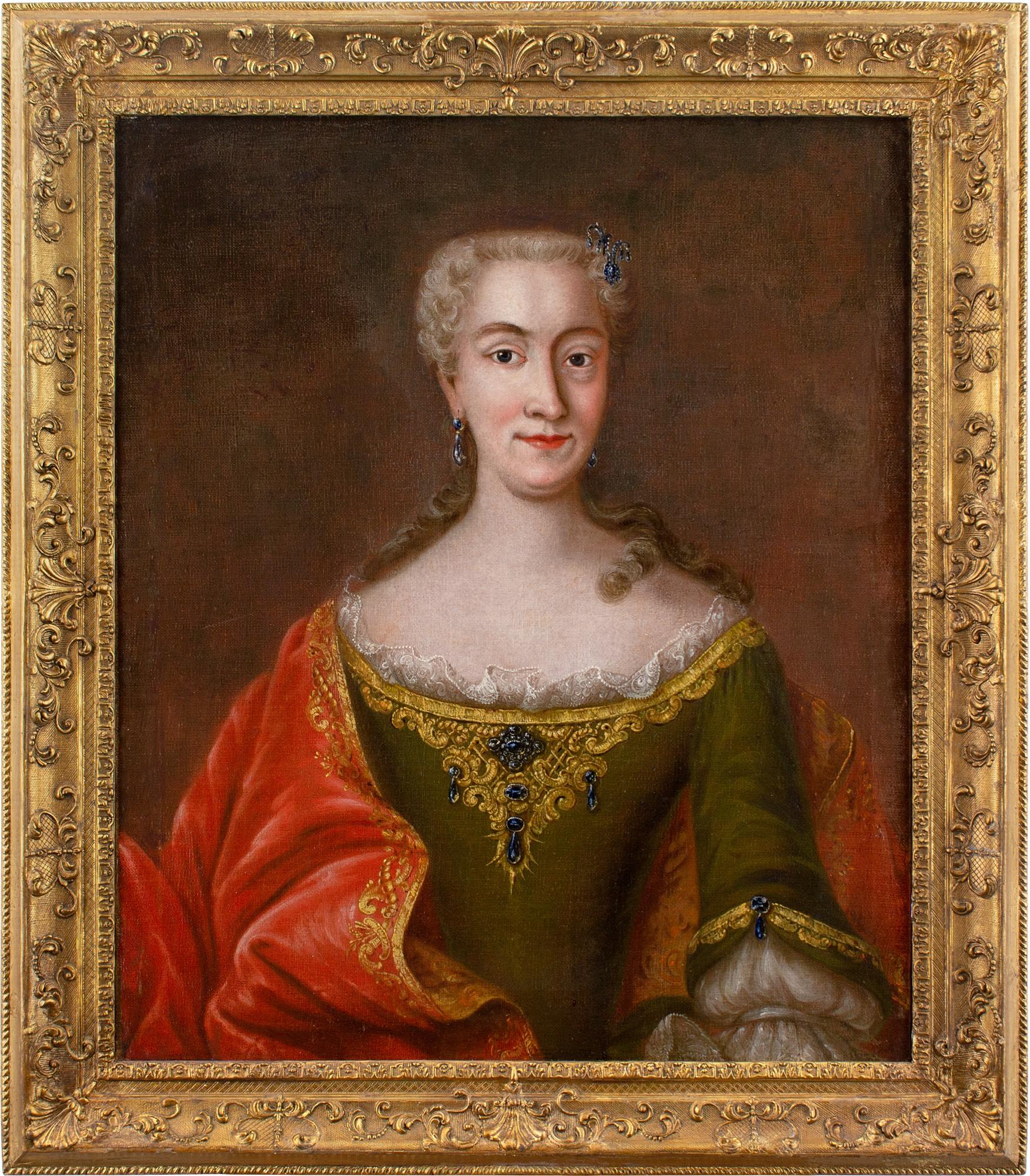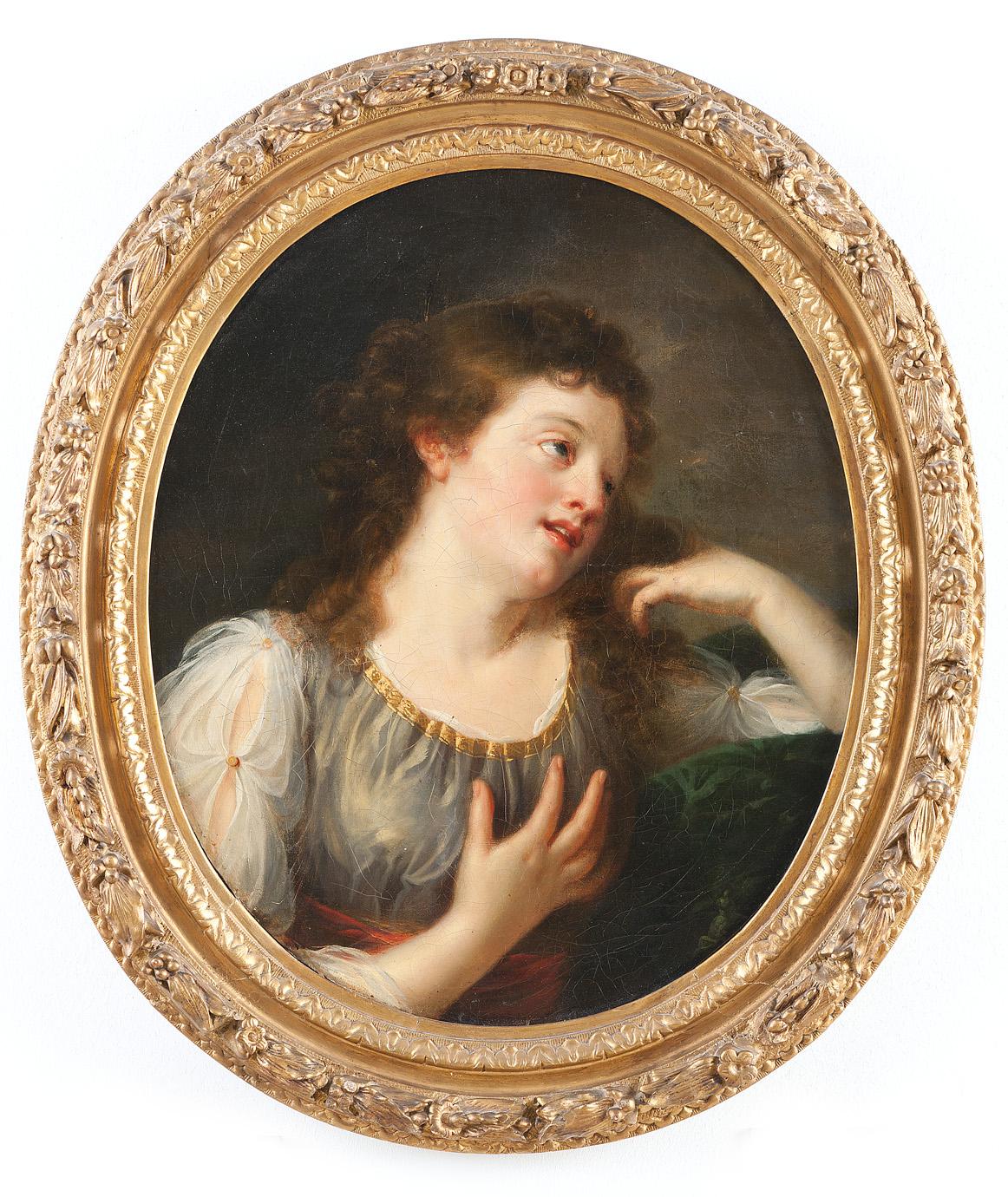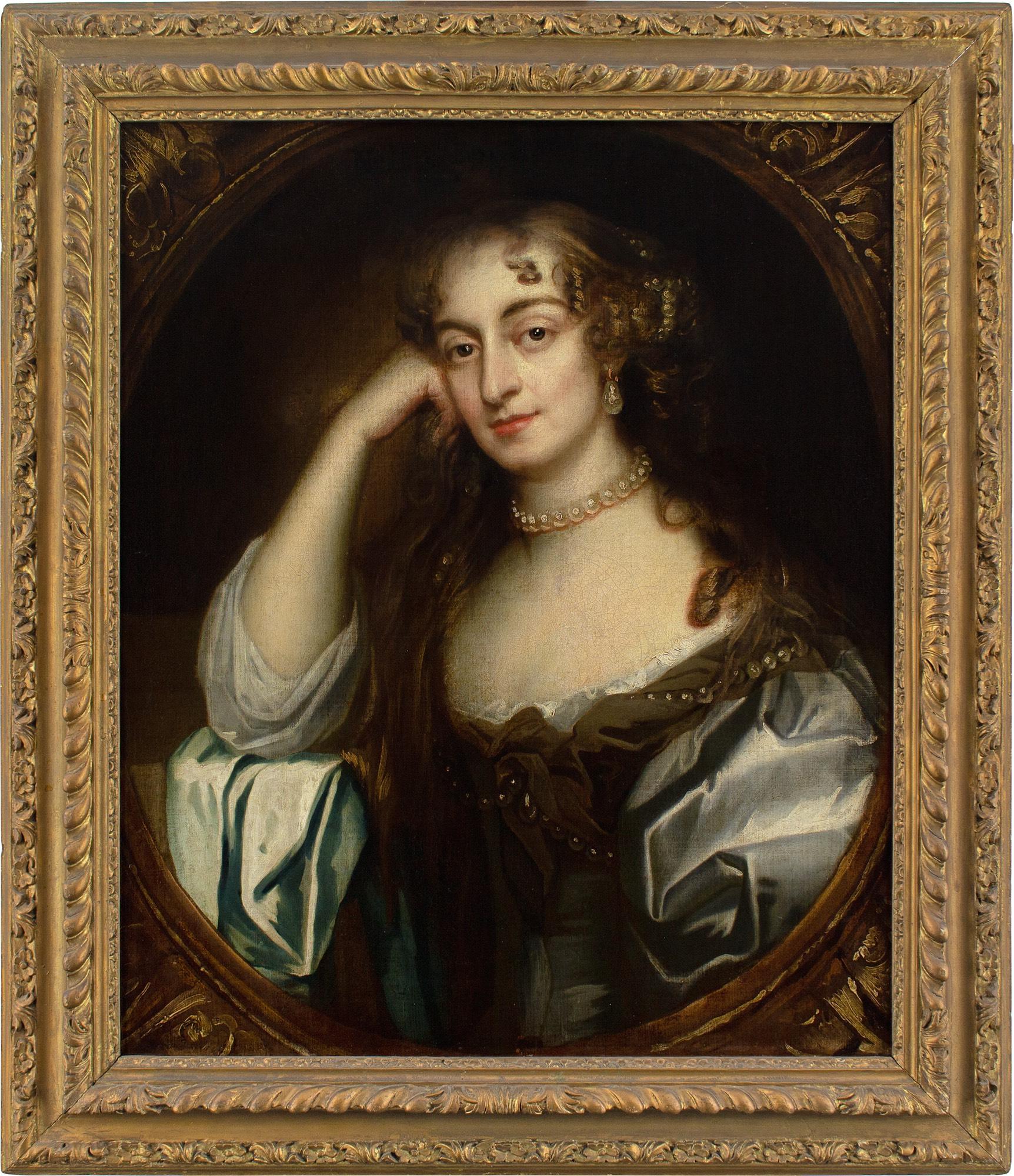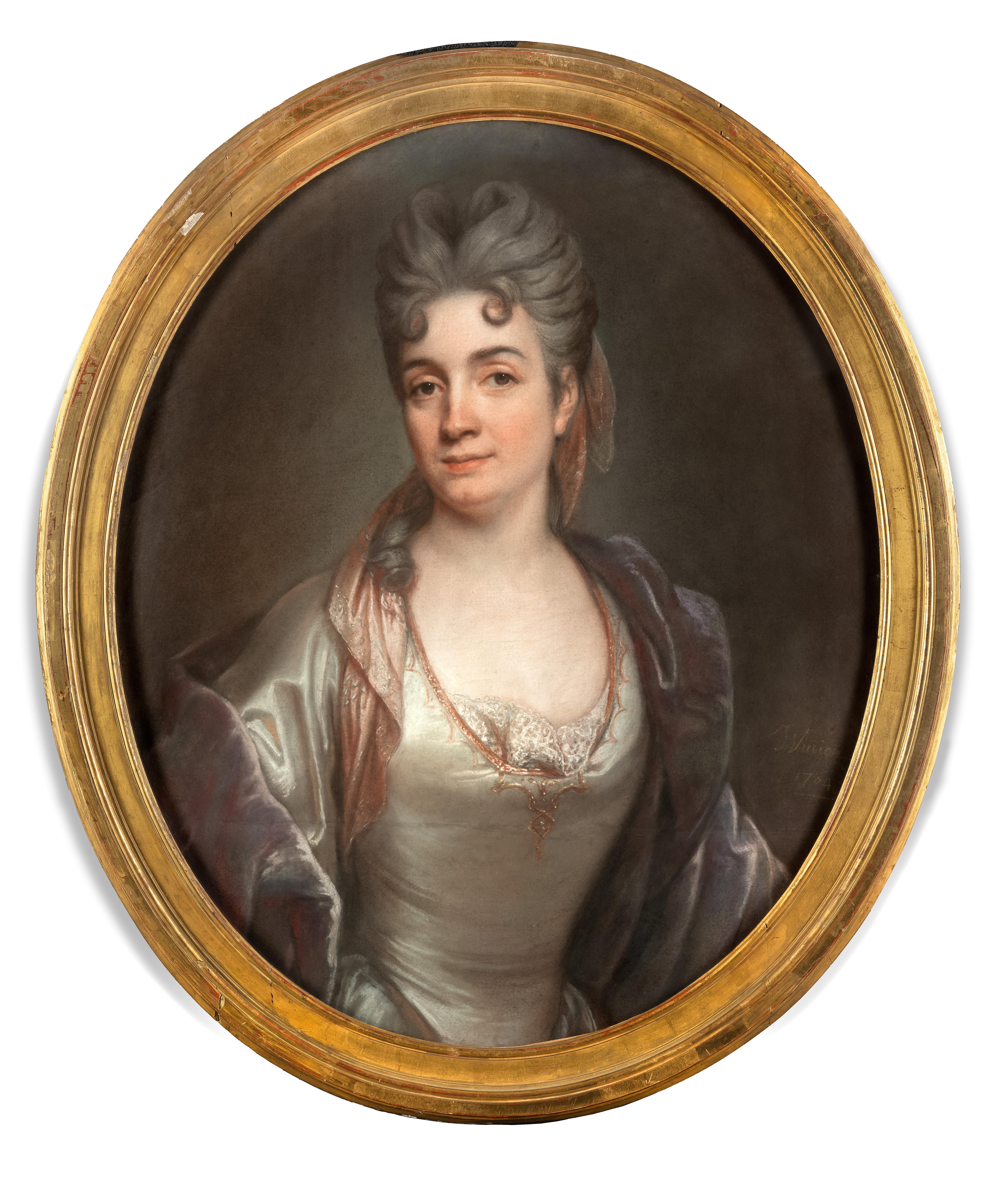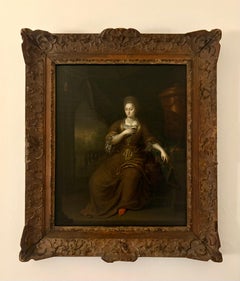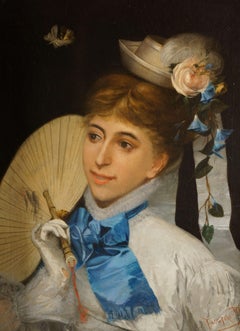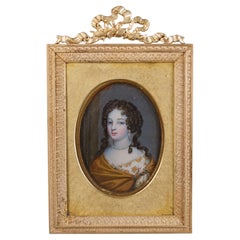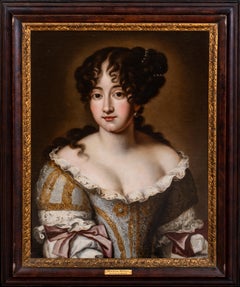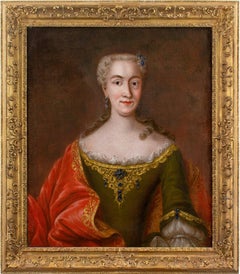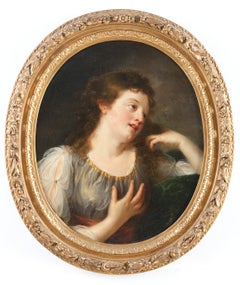Items Similar to Portrait of Empress Sophie-Charlotte of Prussia Miniature Empress Bronze Frame
Video Loading
Want more images or videos?
Request additional images or videos from the seller
1 of 9
UnknownPortrait of Empress Sophie-Charlotte of Prussia Miniature Empress Bronze Framecirca 1830
circa 1830
$1,013.09
£750.19
€850
CA$1,393.15
A$1,549.54
CHF 811
MX$18,899.29
NOK 10,190.47
SEK 9,585.45
DKK 6,471.31
About the Item
Magnificent miniature portrait depicting Queen Sophie Charlotte of Prussia from the Restoration period.
The queen is depicted as a young maiden, probably during her stay in Versailles at the court of the Sun King.
The portrait is exceptionally refined, the young woman's face looks porcelain, illuminated by beautiful blue eyes. It features its original Louis XVI-style frame of finely chiseled and gilded bronze. The gilding is original in very good condition.
Written on the inside is her name "Sophie-Charlotte Konigin von Hannover."
Sophie Charlotte was the first queen of Prussia. He made a trip to France with his mother Sophie in 1679, ostensibly to pursue his interest in garden design. The main interest of the trip, however, was the possible prospect of Sophie Charlotte's marriage to the Grand Dauphin, son of French King Louis XIV, which Sophie was trying to arrange with the help of her niece and former adopted daughter Liselotte von der Palatinate, the king's sister-in-law. However, this goal failed because of the dynastic plans of Louis XIV, who chose a Catholic candidate in the Bavarian electoral chamber.
In 1684 she married Elector Frederick of Brandenburg, known since 1688 as Elector Frederick III, from whose marriage was born the future King Frederick William I.Having died very young, the king wanted to rename Lietzenburg Castle Charlottenburg in honor of his late wife.
Measurements
Frame H max 20 cm W cm 13
Miniature 11 x 7 cm
- Creation Year:circa 1830
- Dimensions:Height: 7.88 in (20 cm)Width: 5.12 in (13 cm)Depth: 0.4 in (1 cm)
- More Editions & Sizes:miniatura cm 11 x 7Price: $1,013
- Medium:
- Movement & Style:
- Period:
- Condition:
- Gallery Location:Pistoia, IT
- Reference Number:1stDibs: LU2746215771032
About the Seller
4.5
Vetted Professional Seller
Every seller passes strict standards for authenticity and reliability
Established in 1997
1stDibs seller since 2024
16 sales on 1stDibs
- ShippingRetrieving quote...Shipping from: PISTOIA, Italy
- Return Policy
Authenticity Guarantee
In the unlikely event there’s an issue with an item’s authenticity, contact us within 1 year for a full refund. DetailsMoney-Back Guarantee
If your item is not as described, is damaged in transit, or does not arrive, contact us within 7 days for a full refund. Details24-Hour Cancellation
You have a 24-hour grace period in which to reconsider your purchase, with no questions asked.Vetted Professional Sellers
Our world-class sellers must adhere to strict standards for service and quality, maintaining the integrity of our listings.Price-Match Guarantee
If you find that a seller listed the same item for a lower price elsewhere, we’ll match it.Trusted Global Delivery
Our best-in-class carrier network provides specialized shipping options worldwide, including custom delivery.More From This Seller
View AllPortrait of a Lady with Jewels Dutch School 18th century Signed with Frame
Located in Pistoia, IT
Portrait of a woman with jewelry, early 18th-century Dutch school by painter Gérard Wigama (1673-1741). Monogram in the lower right corner on the base of the GW column. Fine Arts exp...
Category
1720s Dutch School Portrait Paintings
Materials
Canvas, Oil
Portrait of Elegant Child in Gilded Frame Napoleon III Era Signed
Located in Pistoia, IT
"Portrait of elegant little girl" , extraordinary oil painting on wood panel signed and dated at upper left "A. Robert 1879" for Alexandre Robert.
A Belgian painter of great talent...
Category
1870s Flemish School Portrait Paintings
Materials
Oil, Wood Panel
"Portrait of Elegant" Oil on Canvas Figurative Painting of the Nineteenth Century Italian
By Modesto Faustini
Located in Pistoia, IT
Modesto Faustini (1839-1891), "Portrait of elegant," oil on canvas in gilt frame signed lower right "M. Faustini - Rome."
This splendid portrait belongs to one of the most flourishi...
Category
1860s Italian School Portrait Paintings
Materials
Canvas, Oil
"Portrait of Elegant" Signed and dated 1895 Oil on Canvas in Frame
Located in Pistoia, IT
Octave GALLIAN (1855-1918) "Portrait of Elegant" , oil painting on canvas signed and dated 1895 lower right.
Magnificent portrait depicting a young woman with deep dark eyes and rave...
Category
Late 19th Century French School Portrait Paintings
Materials
Oil, Canvas
Portrait of Elegant Woman in Green Kimono, 19th century French School in Frame
Located in Pistoia, IT
French school of the second half of the 19th century, portrait of elegant woman with green kimono, oil on canvas.
With great decorative impact, the painting depicts a pretty girl t...
Category
Late 19th Century French School Portrait Paintings
Materials
Oil
Portrait of a Girl Oil on Canvas Signed in Frame 19th century Belgian School
By Leon Herbo
Located in Pistoia, IT
Léon Herbo (1850-1907), "Portrait of a Girl," oil painting on canvas signed and dated 1884 lower left. In its original gilt frame.
With extreme elegance and refinement, Léon Herbo p...
Category
1880s Realist Portrait Paintings
Materials
Oil, Canvas
You May Also Like
Portrait of a Lady of the 18th Century French Miniature Gilt Bronze Frame
Located in Pistoia, IT
Magnificent miniature portrait of young damsel from the 18th century. Finely hand-painted. Her beautiful face with the whitest skin, just pinkish on the cheeks, looks like porcelain...
Category
Antique Early 19th Century French Louis XV Models and Miniatures
Materials
Bronze
$1,144 Sale Price
20% Off
Portrait of Hortense Mancini, Duchess of Mazarin (1746-1699), 17th Century
By Jacob Ferdinand Voet 1
Located in Blackwater, GB
Portrait of Hortense Mancini, Duchess of Mazarin (1746-1699), 17th Century
by Jacob Ferdinand Voet (1639-1689)
Large 17th Century Italian portrait o...
Category
17th Century Portrait Paintings
Materials
Canvas, Oil
$8,816 Sale Price
20% Off
Mid-18th-Century French School, Portrait Of A Lady With Sapphires
Located in Cheltenham, GB
This charming mid-18th-century half-length French portrait depicts a lady wearing an olive green gown, together with a red cloak, and exquisite sapphi...
Category
Mid-18th Century Rococo Portrait Paintings
Materials
Oil, Canvas
French School, Portrait of a Young Lady, Actress, Louis XIV sculpted frame, 1700
Located in Greven, DE
French School,
Portrait of a Young Lady, perhaps an actress
Oval
Louis XIV sculpted and gilded frame
French Art, Roccoco Art
The oval portrait of a young woman measures 61 by 50,5 cm canvas sight size and its 18th century oak carved and gilded frame...
Category
18th Century Rococo Portrait Paintings
Materials
Canvas, Oil
Jacob Huysmans (Attributed), Portrait Of A Lady With Pearls
By Jacob Huysmans
Located in Cheltenham, GB
This splendid mid-17th-century half-length portrait attributed to Flemish artist, Jacob Huysmans (c.1630-1696) depicts a lady wearing a brown and ivory dress decorated with pearls, t...
Category
Mid-17th Century Baroque Portrait Paintings
Materials
Canvas, Oil
Portrait Old Master, Joseph Vivien, Mme Silvestre, French Rococo, Pastel
By Joseph Vivien
Located in Greven, DE
The portrait shows Mme Silvestre.
Born in Paris, Silvestre was the daughter of Charles-Antoine Hérault and his wife Marie-Geneviève, who were her first teachers. In 1706 she married the painter Louis de Silvestre, moving with him in 1716 to Dresden. The couple's daughter Marie-Maximilienne became a pastellist. Silvestre died in Dresden, the year before her husband retired and returned to Paris. Her surviving pastels show the influence of Rosalba Carriera...
Category
18th Century Rococo Portrait Paintings
Materials
Gouache, Oil Pastel
More Ways To Browse
Antique Cornice
19Th Century Antique Cameras
Francois De Troy
Gentleman Dog Portrait
James Mortimer
John Romney
Lady Beatrice
Leighton Jones
Madame Alexander
Norman Cornish
Oil Portrait Of Young Blonde Girl
Oliver Samsinger
Sara Scribner
Used Satellite Dish
Vintage Condoms
William Sewell
Allan Ramsay
Catherine Of Braganza
